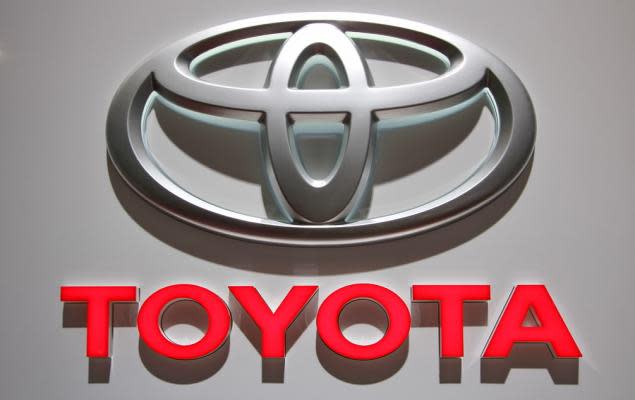Toyota (TM) Trims 2022 Overall US Auto Sales View Amid Chip Woes

Recently, Japan-based auto biggie Toyota TM slashed its outlook for overall new vehicle sales in the United States for 2022 amid exacerbated supply chain snarls due to the Russia-Ukraine war. The company now expects total U.S. sales of 15.5 million units this year, down from its prior view of 16.5 million. If the supply struggles worsen, Toyota expects total U.S. auto sales in the band of 14.9-15 million units. That’s the worse-case scenario.
The executive vice president of sales for Toyota North America, Bob Carter, expects the company’s sales in the United States for Lexus and Namesake brands to be 2.35 million units in 2022.
The geopolitical conflict between Russia and Ukraine is set to prolong auto industry woes. Post a rocky 2020 amid coronavirus woes, market experts predicted a somewhat smoother run for the auto industry in 2021. But when things seemed to be looking up for the auto market in early 2021, with sales recovering from coronavirus lows, the mounting shortage of semiconductors again left the industry in disarray. Just when the industry watchdogs and auto giants were predicting the chip deficit to gradually start easing out from mid-2022, the Russia-Ukraine war triggered a second round of global microchip shortage. Aggravating supply chain snafus are once again prompting automakers to temporarily halt operations in factories, which would limit production and put a lid on sales volumes.
Considering the production cuts and a limited supply of microchips, inventory is likely to remain low for quite some time. Carter believes that it would take around six months for inventory rates to normalize after the supply chain recovers. Additionally, soaring prices of raw materials such as aluminum and nickel will also play a spoilsport. High production expenses would then be passed on to consumers, driving the prices for both ICE and electric vehicles, as everything from batteries to catalytic converters would get more expensive. Yet, Carter is of the view that vehicle affordability won’t be an issue. The demand is likely to be robust even amid rising vehicle prices, but production slowdown and dearth of inventory owing to chip famine will limit sales volumes.
It is to be noted that Toyota sold 514,592 vehicles for the three months ended March 2022. While Toyota’s first-quarter sales fell roughly 15% on a year-over-year basis, electric vehicle (EV) sales witnessed a jump. Toyota’s first-quarter 2022 EV sales totaled 132,938, up 23% year over year. Electrified sales accounted for 25.8% of the total sales volume of the auto biggie.
While near-term sales are under pressure, Toyota’s electrification push is a major tailwind for the long term. The company aims to generate 40% of global sales from electric vehicles (EVs) by 2025 and increase it to 70% by 2030, indicating a jump from around 25% currently. It plans to invest 4 trillion yen ($35 billion) for a line-up of 30 battery electric vehicles (BEVs) by 2030, which will increase its BEV count from the previously planned 15 models by 2025. TM targets to expand global sales of BEVs by 3.5 million units a year by 2030. The automaker’s 4 trillion-yen investment for the development of other electrified vehicles, including hybrids and fuel-cell vehicles, by decade-end and investment in battery development of 2 trillion yen ($18 billion) will bolster long-term prospects and help it to cement a strong position in the EV domain, which is currently dominated by Tesla TSLA.
In a separate development, Toyota’s subsidiary Woven Planet is set to use cameras for its autonomous driving project development. With this move, Toyota will be the only other automaker apart from Tesla to adopt a vision-based strategy in a bid to rev up driverless capabilities. Tesla has always been betting big on cameras to develop its self-driving system. The EV king considers cameras to be much more crucial than radar or lidar equipment. In fact, Tesla’s CEO Musk once said that LiDAR was a “crutch.” Last year, Musk stated that his company would benefit from a camera-only approach to self driving.
While Toyota still plans to use sensors like LiDAR or other radar systems for self-driving projects, it would also utilize low-cost cameras to collect data and train its driverless system. The company claims that this would not just reduce costs but also scale up its efforts in the race to autonomous driving. TM also believes it may so happen that camera tech might completely overtake expensive sensor-driven self-driving systems in the future.
Toyota currently carries a Zacks Rank #3 (Hold). You can see the complete list of today’s Zacks #1 Rank (Strong Buy) stocks here.
Want the latest recommendations from Zacks Investment Research? Today, you can download 7 Best Stocks for the Next 30 Days. Click to get this free report
Toyota Motor Corporation (TM) : Free Stock Analysis Report
Tesla, Inc. (TSLA) : Free Stock Analysis Report
To read this article on Zacks.com click here.
Zacks Investment Research
